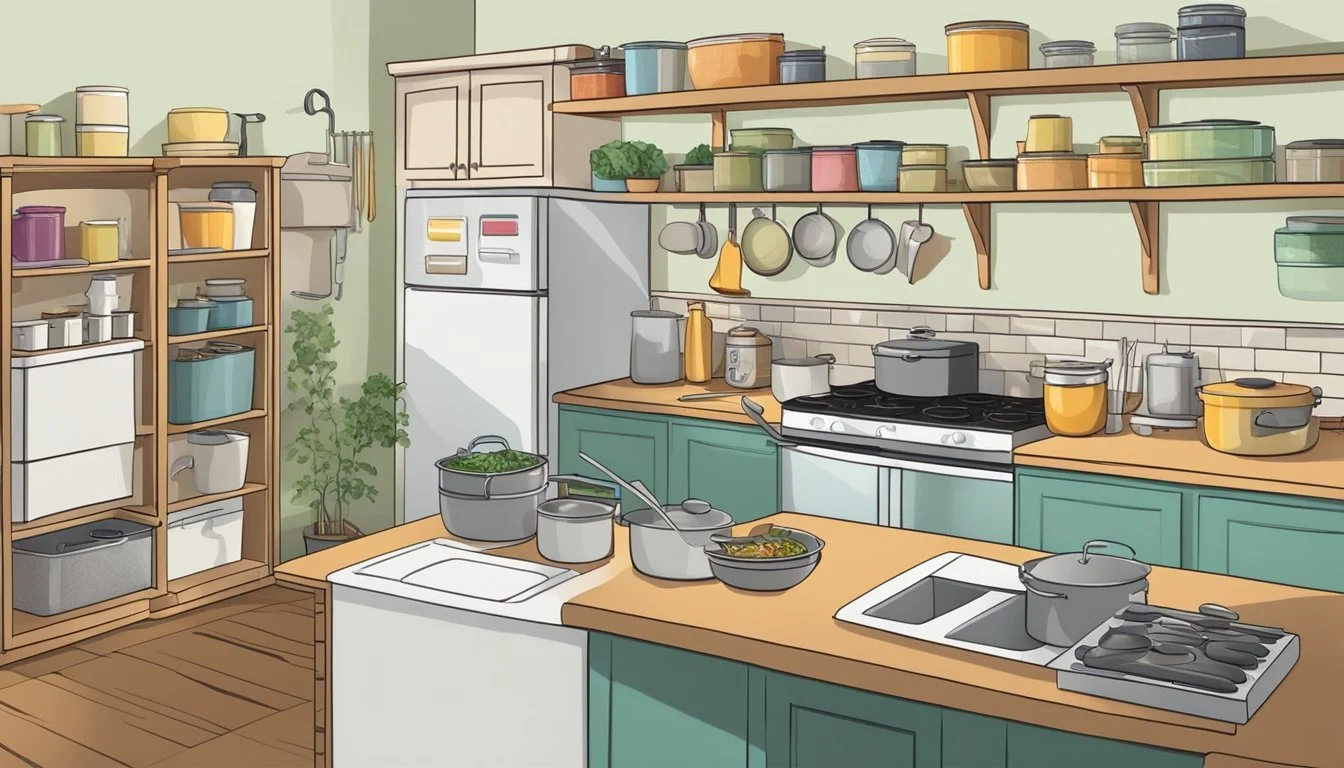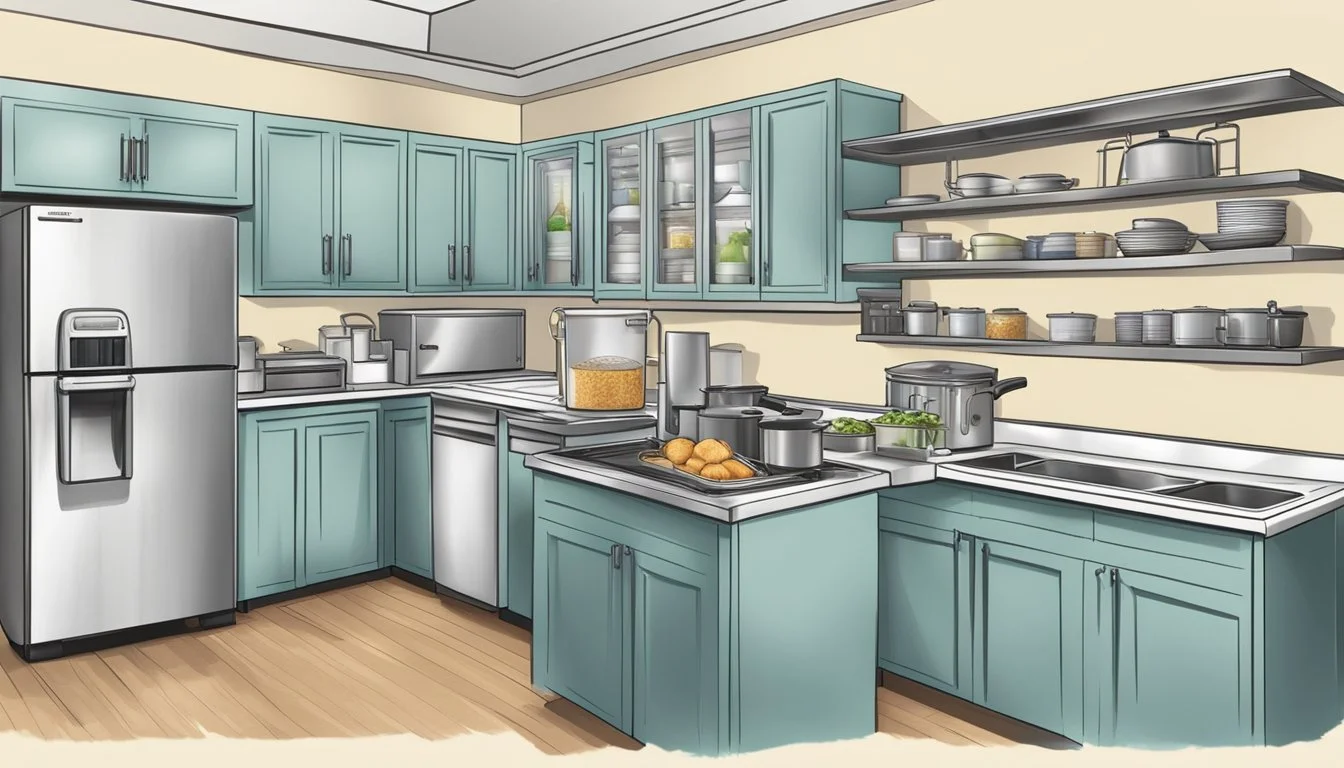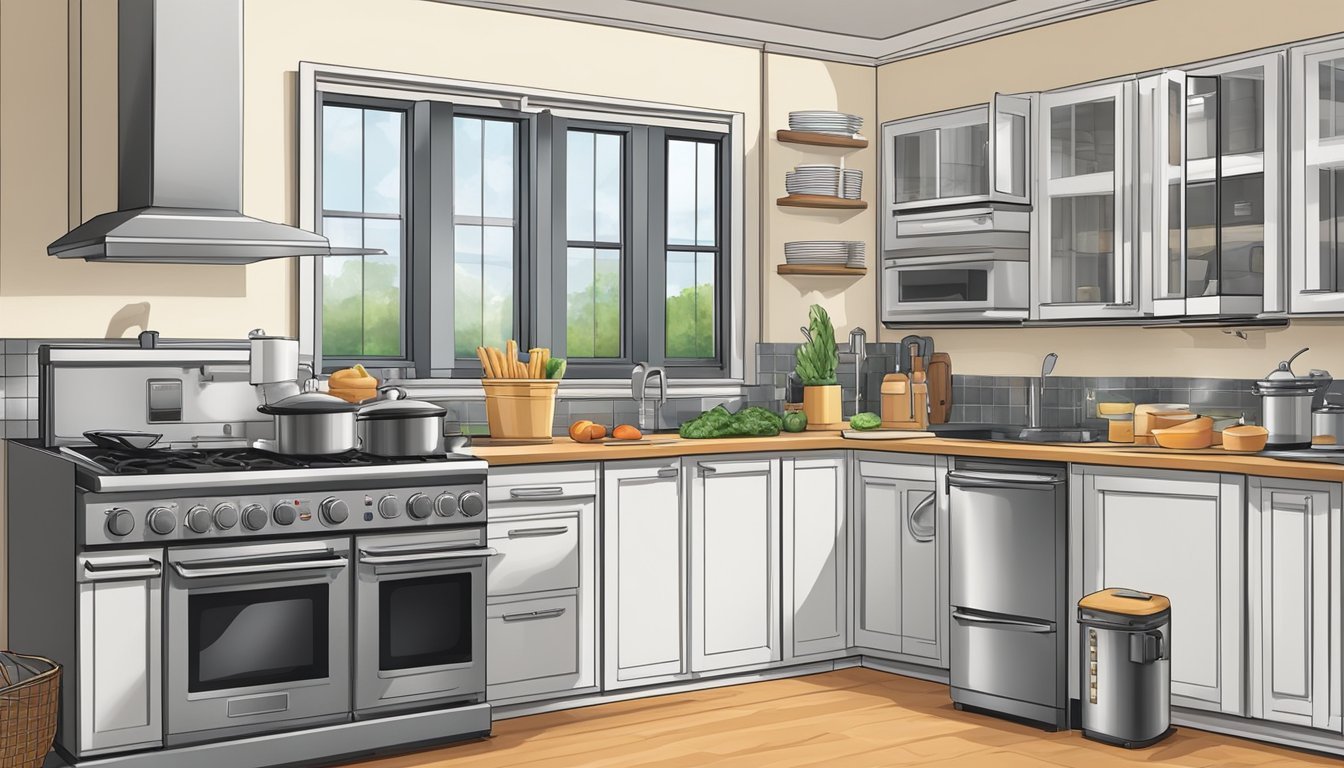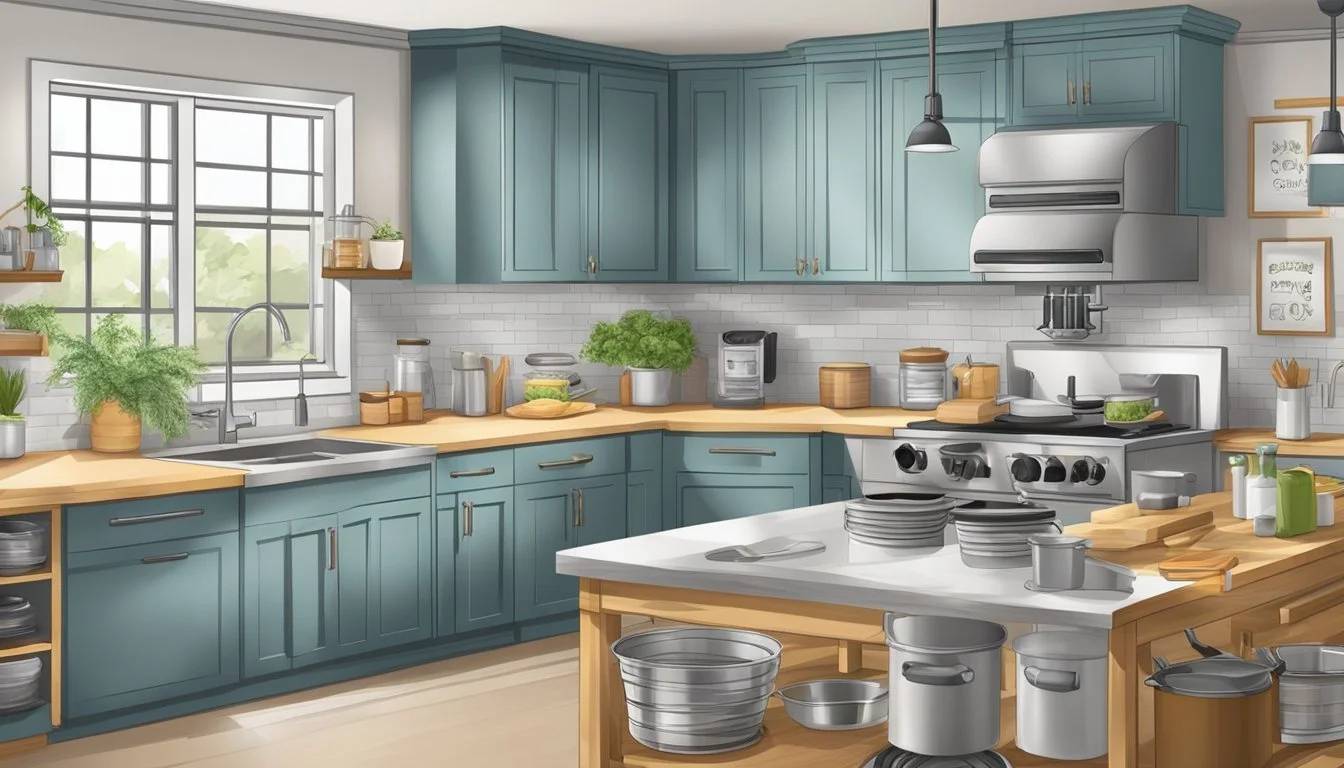5 Tips for Organizing Your Kitchen for a Dinner Party with a Deep Fryer
Streamline Cooking and Hosting
Hosting a dinner party often involves a dance of timing and space, particularly when a deep fryer becomes part of the equation. As a versatile cooking appliance, the deep fryer can offer a range of delicious treats, from appetizers to main courses. However, it requires thoughtful organization and attention to safety to ensure a smooth and enjoyable experience for both the host and guests. To navigate the unique challenges of integrating a deep fryer into party preparations, one must consider kitchen layout, ingredient readiness, and efficient serving methods.
Effective kitchen organization can make the difference between a relaxed host and a frazzled one, thereby directly affecting the atmosphere of the dinner (What wine goes well with dinner?) party. By preparing the kitchen for efficiency, ensuring all the necessary tools and ingredients are at hand, and planning for easy cleanup, hosts can entertain guests with ease. Arranging the kitchen to serve guests without bottlenecking is crucial, as is facilitating a flow that allows for both fresh, hot food to leave the kitchen and empty plates to return without interruption. When the deep fryer is in play, safety is paramount, meaning it should be stationed away from high traffic areas while maintaining accessibility for the cook.
Beyond layout, anticipating guest needs ahead of time contributes to a stress-free environment. This includes tasks such as organizing silverware for effortless pickup, preparing containers for leftover food, and handling any dietary restrictions in advance. By following strategic tips and keeping these principles in mind, hosts can confidently provide a memorable experience, serving up deep-fried delicacies as part of a seamless dinner party.
Getting Started with Kitchen Organization
Before diving into the dinner party preparations with your deep fryer, one must focus on setting the kitchen stage for efficiency and aesthetic appeal. A well-organized kitchen not only looks inviting but also streamlines your cooking process, making it more enjoyable.
Assessing Your Space
To begin, it is crucial to evaluate the current state of the kitchen. One should measure the dimensions of counters, cupboards, and shelves to understand the available space. It's essential to factor in areas that will specifically house the deep fryer and related accessories—ensuring it's both accessible and safe.
Countertop Area: Measuring space for the deep fryer and prep work.
Storage Space: Dimensions of cabinets for storing utensils and ingredients.
Decluttering Your Kitchen
Once the spatial layout is clear, the next step involves decluttering. This means identifying and removing items that are not essential, broken, or rarely used. By decluttering, one creates not just physical space but also a more calming environment to work in.
Remove Unnecessary Items: Sorting and discarding without sentimentality.
Rearrange Essentials: Keeping frequently used tools within reach, like cutting boards and cookware.
Sourcing Organization Tools
With a decluttered kitchen, sourcing the right organization tools becomes the next critical action. Look for multi-functional storage solutions, such as a rolling cart that provides additional space and can be moved as needed. For smaller items, use bins and baskets to keep things corralled and the kitchen looking tidy.
Rolling Cart: Acts as a mobile station for the deep fryer and ingredients.
Storage Bins: Ideal for grouping similar items together neatly.
By methodically moving through these steps, a kitchen can transform into an optimized environment ideal for hosting and cooking with a deep fryer.
Strategic Storage Solutions
For a dinner party utilizing a deep fryer, an organized kitchen ensures efficiency and safety. Strategic storage solutions leverage every inch of space while allowing easy access to the various tools and ingredients you'll need.
Maximizing Cabinet Use
To fully capitalize on kitchen cabinets, one should consider adjustable shelving to accommodate various cookware sizes. Assigning a specific shelf for deep fryer accessories and ingredients aids in systematic retrieval. It's advisable to group items by use; for instance, placing all deep frying utensils in one area can streamline the cooking process. Utilizing stackable storage containers can further enhance organization and save space within the cabinets.
Optimizing Drawer Space
Drawers should be organized with a focus on the frequency of use. Ensure that the most commonly used tools are within easy reach. Implementing drawer dividers can segregate utensils and keep them from shifting. Allocate one drawer close to the frying area for tools like tongs, spatulas, and thermometers, which are essential for safe and precise deep frying.
Utilizing Vertical Storage
Vertical storage solutions can significantly increase available workspace. Installing a pegboard near the deep fryer allows one to hang utensils and frying baskets, keeping them off countertops but within arm's reach. Open shelves are perfect for storing spices and oils that one may require quickly while frying. For optimal organization and aesthetics, place items on open shelves by category and frequency of use, and consider using attractive storage solutions such as matching jars for a cohesive look.
Kitchen Zones and Workflow
In planning a dinner party, especially when a deep fryer is involved, understanding and implementing kitchen zones can significantly enhance workflow efficiency. Intelligently organizing these zones aids in speedy preparation and service.
Creating Functional Zones
Functional zones streamline cooking and serving processes. Typically, one should establish five main zones: Prep, Cooking, Serving, Cleaning, and Storage. The Prep Zone should contain all necessary kitchen tools for cutting, marinating, and assembling food, like cutting boards and knives. Meanwhile, the Cooking Zone centers around the deep fryer and other cooking appliances. Especially when deep frying is involved, this area should have ample space, as cookware like frying baskets and pots, as well as safety gear to handle hot oil, are essential. One must ensure that serving dishes are conveniently located, often between the cooking and dining areas to enable effortless transitioning of food from frying to plating.
Aligning Items with Frequency of Use
Items should be positioned in accordance with their frequency of use. Daily-use items like spatulas and tongs should be readily accessible in the prep and cooking zones. In contrast, infrequently used items can be stored higher up or further away to maximize space. A practical example:
Prep Zone: Frequent-use tools (knives, peelers)
Cooking Zone: High-use cookware (frying baskets, pots)
Serving Zone: Plates, bowls, utensils within arm's reach
Zone Items for Frequent Use Items for Occasional Use Prep Cutting boards, mixing bowls Specialty gadgets (e.g., zesters) Cooking Deep fryer, skimmers, shielding equipment Extra cooking utensils, pot holders Serving Serving platters, utensils Decorative items or season-specific dishes
In a dinner party setting, having a well-organized kitchen with tailored zones is crucial. Organizing cookware and tools according to frequency of use not only boosts efficiency but also minimizes the risk associated with using potentially hazardous equipment like deep fryers.
Smart Food Management
Managing food effectively ensures a seamless kitchen operation during a dinner party, especially when using a deep fryer. Adequate organization of the pantry, refrigerator, and food storage solutions is crucial for efficient access and food freshness.
Organizing the Pantry
The pantry should be a cook's treasure trove, with all ingredients readily available and easy to locate. They should categorize items by type and frequency of use. For example, a section for deep fryer essentials like breadcrumbs or batter mixes should be within arm's reach. Glass jars and clear tupperware can help maintain visibility and order, with labels facing outward for quick identification.
Deep fryer necessities: Grouped and front-lined for easy access.
Dry goods: Arranged in transparent, airtight containers to preserve freshness.
Seasonings: Alphabetized or sorted by cuisine.
Refrigerator Organization
A tidy refrigerator helps prevent food spoilage and cross-contamination while making ingredients easy to find. They should designate areas for raw meats, often used in deep frying, away from ready-to-eat foods. Using stackable, clear containers and consistent labeling, chefs can maximize space and minimize search time.
Fridge Zones:
Raw Ingredients: Bottom shelf, minimizing the risk of drips.
Prepped Items: Middle shelf, in transparent containers for visibility.
Condiments: Door racks, with frequently used items reachable.
Food Storage Solutions
Efficient food storage solutions are the backbone of kitchen organization. Cooks should use a variety of containers to accommodate different food types and quantities. Glassware is preferable for reheating, while sturdy, leak-proof tupperware is ideal for marinating items destined for the deep fryer.
Storage Must-Haves:
Glassware: For leftovers that require reheating.
Airtight Tupperware: To marinate and store raw or cooked foods securely.
Advancing Your Organizing Approach
When throwing a dinner party, especially one involving a deep fryer, organizing the kitchen becomes paramount for a smooth experience. Efficiency can be greatly enhanced with strategic use of labeling and expert-recommended organizing techniques.
Labelling for Efficiency
Labels serve as an essential tool in a well-organized kitchen. They ensure that every ingredient and tool has a designated place, making them easy to locate when needed. Glass jars, often recommended by culinary expert Ina Garten, provide an ideal storage solution for bulk ingredients like flour or breadcrumbs typically used in deep frying. When placed in clear glass jars with bold labels, the contents become easily visible and accessible.
Tips for Effective Labeling:
Use waterproof and oil-resistant labels for longevity.
Clearly write the contents and date of storage if applicable.
For aesthetic consistency, opt for a uniform label design.
Expert Tips and Tricks
Professionals often share organizing ideas to streamline the cooking process, particularly when preparing for a gathering. Below are a few expert-vetted tips and tricks that one can apply:
Preparation: Prepare ingredients beforehand to avoid a last-minute rush.
Ina Garten's advice: Keep essential cooking tools within arm's reach to save time during the cooking process.
Storage Solutions: Invest in functional storage items that aid in maintaining an organized space.
Examples:
Turntables for easy access to oils and sauces.
Drawer dividers for kitchen tools.
Bins and baskets to group similar items together.
By employing these specific strategies, one's kitchen can become an epitome of organization which not only eases the cooking experience but also assists in hosting a successful dinner party.
Ensuring a Smooth Dinner Party
A dinner party's success often hinges on meticulous kitchen organization, especially when a deep fryer is involved. It ensures efficiency, safety, and a pleasant experience for both the host and the guests.
Pre-Party Kitchen Preparation
To ensure a seamless dinner party, kitchen preparation is crucial. Hosts should allocate extra storage space for ingredients, move rarely used items out of the way, and create a designated spot for the deep fryer to avoid clutter. Additionally, planning the party menu in advance allows for strategic grocery shopping and proper ingredient storage.
Clear countertops to maximize prep space.
Designate a safe, ventilated area for the deep fryer operation.
Cookware and Utensils Readiness
The right cookware and utensils need to be within reach for efficient cooking. Pots and pans that complement the deep fryer, like baskets and skimmers, should be easily accessible. It's wise to prepare a list of necessary utensils and check it twice to ensure nothing is forgotten.
Prearrange pots, pans, and deep fryer accessories.
Inspect utensils for cleanliness and functionality.
Serving and Hosting Essentials
Every dinner party requires serving and hosting essentials to keep guests satisfied and comfortable. Hosts should review their inventory of glassware, serving dishes, and other serving utensils, making sure they are clean and ready for use.
Pre-set the table with necessary glassware and serving dishes.
Position extra plates, cutlery, and napkins for easy accessibility.
By addressing these specifics, hosts can create a pleasant atmosphere for their guests and enjoy the gathering as much as their invitees do.
Maintaining Your Organized Kitchen
In the quest to keep a kitchen organized for dinner parties, especially those that include deep frying, it is imperative to embrace systematic tidying habits and the willingness to minimize clutter. This ensures that the kitchen remains a functional and welcoming space for both cooking and entertaining.
Frequent Tidying Habits
The foundation of maintaining an organized kitchen lies in regular cleaning and decluttering. After each meal preparation or dinner party, individuals should take time to clean all surfaces, including the deep fryer, and return all tools and ingredients to their designated places. This routine prevents the buildup of grease and debris, which is especially crucial in areas where a deep fryer is used.
Daily Maintenance:
Wipe down countertops and cooking appliances.
Sweep or vacuum the floor to remove food particles.
Sanitize the deep fryer area to prevent oil residue accumulation.
Weekly Check:
Organize pantry items and refrigerated goods.
Check for expired items and discard accordingly.
Review and sort through utensils and cooking tools, ensuring that each item is in its right place.
The Art of Letting Go
A clutter-free kitchen is one that holds only items that serve a purpose or bring joy. The process of decluttering should extend to identifying and separating items that are rarely used, duplicates, or have outlived their usefulness.
Decide What to Keep:
Essentials: Retain items that are frequently used, especially for parties involving a deep fryer, such as oil thermometers, fry baskets, and long-handled utensils.
Duplicates: If there are multiple items serving the same function, keep the best quality or most frequently used one.
Decluttering Strategy:
Toss: Safely dispose of broken or worn-out items.
Donate: Offer unwanted but functional items to charity or share with friends.
Reassess: Periodically review kitchen items to prevent the accumulation of unnecessary duplicates or rarely used objects.
Following these practices not only enhances efficiency during food preparation but also contributes to a harmonious environment that is perfect for hosting.









